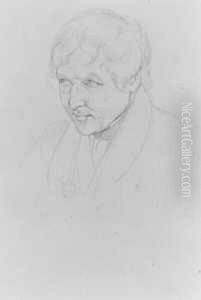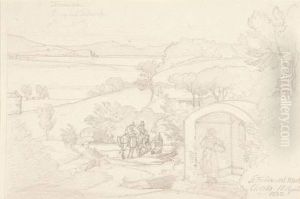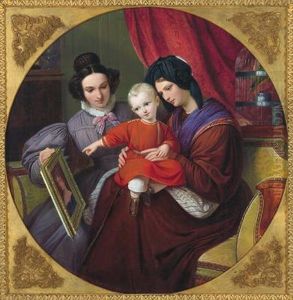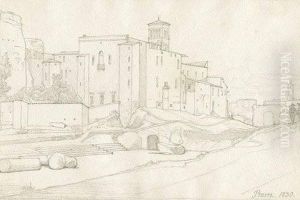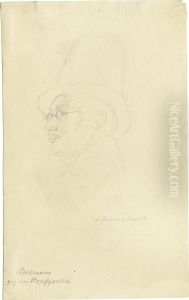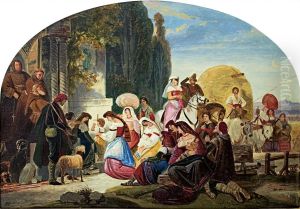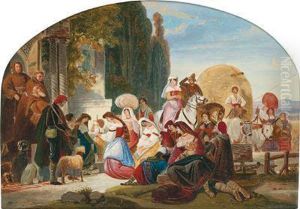August Ferdinand Hopfgarten Paintings
August Ferdinand Hopfgarten was a German sculptor born on August 2, 1807, in Berlin. His career unfolded during a period that saw the flourishing of German Romanticism, yet his work also bridged to the historicism and neoclassicism that characterized the mid to late 19th century. Hopfgarten was deeply influenced by the cultural milieu of Berlin, a city that was at the heart of intellectual and artistic developments in Germany during his lifetime. He was part of a generation that sought to revive and reinterpret classical ideals in art, embedding them with a sense of modernity and national identity.
Hopfgarten's education and artistic development were deeply rooted in the prestigious Prussian Academy of Arts, where he honed his craft under the tutelage of renowned sculptors of the time. His style evolved from the strict neoclassical approach to incorporating more dynamic and expressive qualities, reflecting the changing tastes and philosophical outlooks of the 19th century. He became known for his sculptural works that ranged from public monuments to more intimate portrait busts and reliefs, each embodying a blend of classical elegance and Romantic sensibility.
Throughout his career, Hopfgarten contributed significantly to the cultural landscape of Berlin and beyond. His works were part of the broader effort to commemorate and celebrate national heroes, historical events, and cultural achievements of Germany. Among his notable works are contributions to the decoration of the Berlin Cathedral and other public buildings, which remain testaments to his artistic legacy. Despite the shifts in artistic trends over the decades, Hopfgarten's work retained its relevance and appeal, bridging the gap between tradition and innovation.
August Ferdinand Hopfgarten's death on January 12, 1896, marked the end of an era that he had helped to shape. His contributions to the field of sculpture and to the cultural heritage of Germany have been recognized by art historians and scholars, who see in his work the embodiment of the 19th-century artistic spirit. His legacy is preserved not only through his surviving works but also through his influence on subsequent generations of artists who sought to navigate the complexities of modernity while staying true to classical and national ideals.
